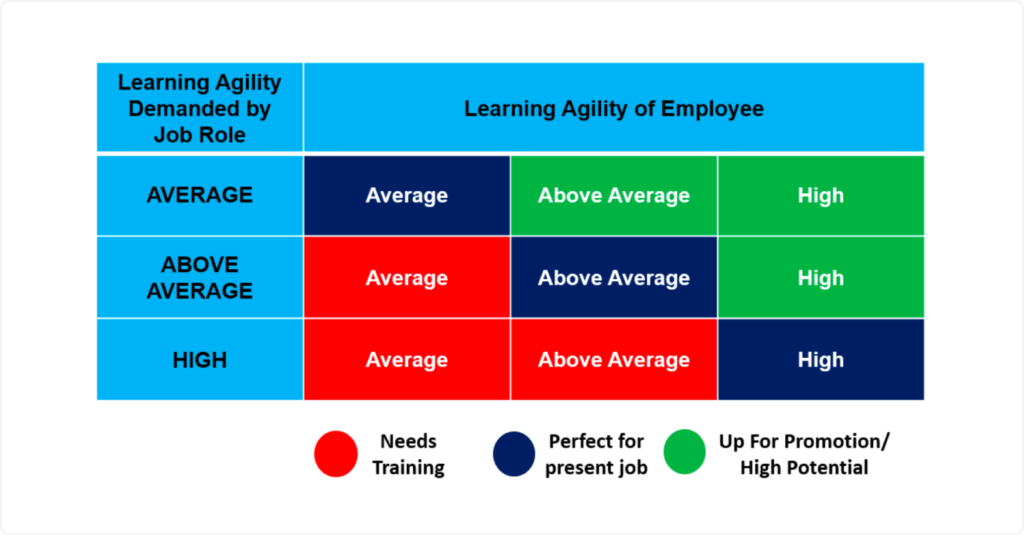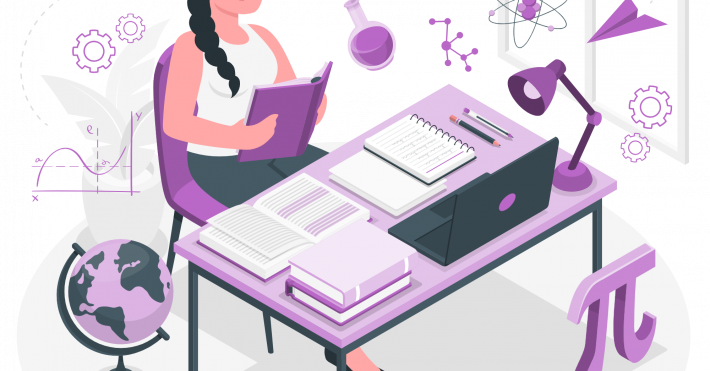In order to be successful in today’s fast-paced, ever-changing business world, it is essential to have a high degree of learning agility. But what is it, and how can you measure it? This article will explore those questions and provide tips for improving it.
Who of us has never had this experience? You are encouraged to try out new things, but at the same time, you sense that it will be challenging. You don’t know what exactly awaits you if you decide to take on the challenge or if you give up before even attempting.
Learning agility is defined as our ability to recognize when learning something new is needed, understand what is required (including having some plan for how to learn), and make an effort to engage in learning (Gallagher & Reid, 2012).
This might sound like a simple skill, but many factors may affect whether someone decides to learn something new or not, e.g., fear of failure (Bishop & Verleger, 2003), fear of success (Smith & Pellicano, 2003), or lack of necessary skills.
There are two main approaches on how to measure this: first, by measuring the actual behavior; second, by using self-report questionnaires (Cordery et al., 2011).

Source: Harver
How to measure Learning Agility?
Measuring learning agility behavior is not as straightforward as it may seem. Several elements need to be observed when assessing someone’s ability to acquire new knowledge and skills.
The most important ones are engagement in challenging situations or tasks, openness to new experiences/challenges, motivation for learning new things based on personal interest instead of pressure from others, taking advantage of opportunities to learn something new despite being difficult, and learning from mistakes (Cordery et al., 2011).
Other elements can be observing the amount of time someone spends preparing for new tasks or the degree to which this preparation is successful.
What is the Second Approach?
The second approach, is by measuring through questionnaires, has become quite popular in recent years. This includes the Learning Agility Scale (Tannenbaum & Yukl, 1992) and the Developmental Scale (Gallagher & Reid, 2012), both of which assess four different types of learning agility: cognitive, flexibly switching between different thought patterns; proactive, planning ahead with a long-term vision; reflective self-assessment; and interpersonal relationships with others when working together on projects.
One problem with self-report questionnaires is that they may not always measure what they claim to be measuring. Gallagher and Reid (2012) say that the instruments used up until now, such as the Learning Strategy Questionnaire (McKeachie et al., 1986), do not assess the agility score but rather learning strategies. This means that we should use caution when applying these instruments in research or practice.
The main goal of learning agility is to achieve goals and succeed in our increasingly dynamic and complex world (Gallagher & Reid). By better understanding this, we will learn how individuals cope with this ever-changing environment and are able to support those who aren’t very good at doing so.
Learning New Skills
Learning agility is the capability of individuals to learn new skills and acquire knowledge in a fast and effective way. It includes cognitive (desired knowledge, perspectives, and judgment), experiential (experience), and behavioral (skills) components. Individuals with high learning agility possess many positive characteristics such as flexibility and openness to change; they can learn effectively from their own experiences, create new perspectives on issues by considering multiple viewpoints, analyze problems using different views, and challenge existing beliefs that may prevent them from acquiring new knowledge or skills, etc.
Researchers differentiate between three types: integrative learning agility (ILA), creative thinking-creative orientation-innovative self-concept (CTCOSI), and entrepreneurial readiness (ERE). Speaking in terms of the CTCOSI model, learning agility is defined as a person’s ability to learn new skills and knowledge with ease, to be flexible when it comes to acquiring new skills or knowledge, and easily change perspectives when faced with different problems that require creative problem-solving.
How to Assess Learning Agility
Assessing someone’s learning agility can help companies build more efficient training programs for their employees. By understanding how their workforce thinks, feels, perceives things, and solves problems, managers are able to tailor their training courses accordingly, so employees feel comfortable learning new things. This will increase their chances of succeeding in any given task once they’re back at work.
In order to measure it accurately, some researchers suggest linking it to a personality trait known as interpersonal intelligence. This is because most people with high learning agility have been shown to possess high levels of interpersonal intelligence, according to research from the University of Massachusetts Amherst.
What are the Benefits of Learning Agility?
Better problem-solving skills: Researchers found that those who had high levels of learning agility were better at solving problems than those with lower levels.
Improved performance: A study on police officers found that those who had higher levels showed more leadership and engaged in less counterproductive behaviors, such as blaming others for their mistakes. They also demonstrated learning from new experiences and adapting quickly during critical incidents.
Better social skills: Learners with high learning agility tend to have good people skills, as they can work well in teams and communicate effectively with other learners. This is because they can see things from others’ perspectives and adjust accordingly when needed, rather than sticking rigidly with what they know best.
Greater job satisfaction: Studies have shown that those with high learning agility tend to be more satisfied with their jobs compared to those who don’t have this ability.
Conclusion
Learning agility is the ability to learn new skills or concepts quickly. It’s important for any professional who wants to stay relevant in an ever-changing job market, but it can be challenging to measure how agile someone is. That’s where learning analytics comes into play. So, in this blog post, we talked about the different ways on using job data and metrics to better understand your employees’ levels of learning agility. Sign up to JobsPikr to leverage job data and boost learning agility insights for your team!



